Loft Peeping: Edward Albee’s home on Harrison
It’s a “Loft Peeping” and an “If These Walls Could Talk” all in one! (Yes, dessert topping and floor wax — I know you can hear Chevy Chase in your head right now.) Tom Titone is the broker and, as usual, Tom Miller is the historian in this combo post about Edward Albee’s loft at 14 Harrison. The decor is by the playwright himself.
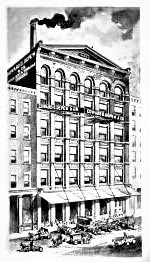
The building has a storied past, but we will start with the ending, straight from Miller’s post: “In 1977 playwright Edward Albee purchased the space, filling it with modern art masterpieces by the likes of Chagall and Kandinsky, as well as a collection of African art. The long wooden dining room table, where Albee reportedly wrote portions of his plays, was the scene of script readings, and the vast open space saw rehearsals. Once a year Albee threw his anticipated Christmas party attended by stage and screen royalty like Marlene Dietrich, Kathleen Turner and Lauren Bacall. Albee’s summer estate was in Montauk. Albee died on Sept. 16, 2016, having won three Pulitzer Prizes for drama and two Tony Awards for best play. Among his best-known works were ‘The Zoo Story,’ ‘The Sandbox,’ ‘Who’s Afraid of Virginia Woolf?’ and ‘A Delicate Balance.'”
Miller’s history of the building starts in 1881 with a German immigrant named Henry Heide, whose candy making company invented an almond paste that, once patented, would go on to change the history of macaroons as we know it. (He also invented Jujubes and Jujyfruits.) Heide purchased two wooden houses on the site of 14 and 16 Harrison and tore them down to make the building that stands there today as a home for his factory. He would over the years assemble three other properties at the site — 18 Harrison, and 181-183 Franklin — and develop the corner of Hudson and Vandam, since at this point the factory was producing 250,000 pounds of confections daily.
By 1916, Heide liquidated all his Harrison and Franklin street properties and sold them to a real estate firm that then leased them as a giant refrigerated warehouse for butter and egg companies, the last of which was a cheese merchant called J.S. Hoffman. By 1945 Hoffman had purchased the buildings, along with 179 through 183 Franklin, and once again connected them internally. By the mid ’70s, the buildings had been converted for “joint living/work quarters for artists” with one residence per floor. Enter Albee, stage right.
The loft is a duplex with an elevator opening to both the fifth and sixth floors, with 4,500 square feet, roof rights and 17-foot ceilings. All interior photos with thanks to Tom Titone.
(And if you are studying the drawing here and trying to make it sync with the photos today, as I was, here’s Tom Miller’s explanation of the discrepancy: “The illustrator in 1902 seems to have taken artistic license with his depiction. There were never six bays, always five. Additionally, the sixth floor, which is only partially extant today, started just above the arched openings and extended into the peaked gable section. If you look at the interior shots of the Albee apartment, you can see that the sixth floor is almost a loft today. When the gabled roof was removed (possibly because of fire damage), the front portion of the sixth floor was lost. That illustrator in 1902 needs to be fired.”)







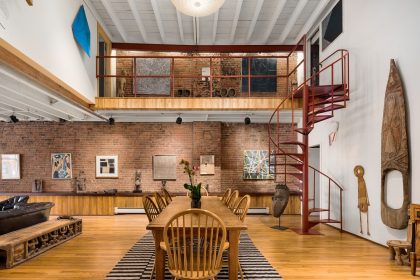
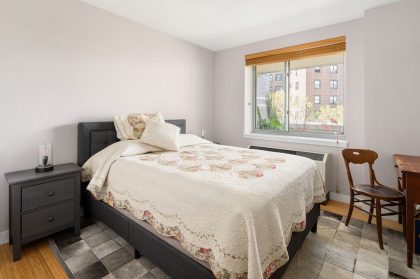
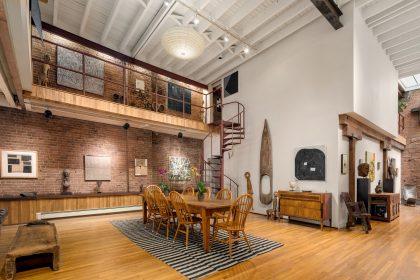
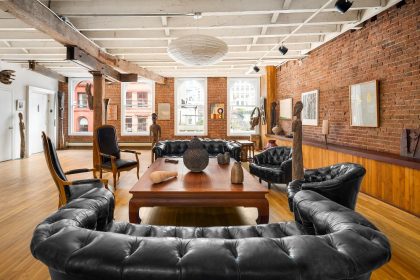









love the write up but I’m not sure I would consider it “loftpeeping” if they’re just all listing photos.